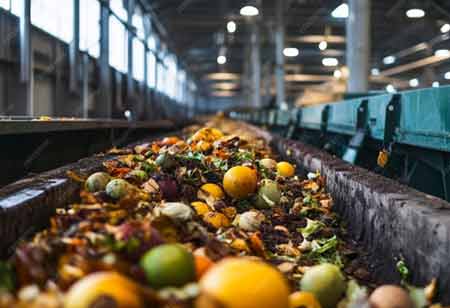THANK YOU FOR SUBSCRIBING
Be first to read the latest tech news, Industry Leader's Insights, and CIO interviews of medium and large enterprises exclusively from Food and Beverage Tech Review
How can You Prevent Food Spoilage During Power Outages?
Public health experts advise people to practice proper food safety during power outages as severe weather is anticipated across the United States.

By
Food and Beverages Tech Review | Thursday, February 29, 2024
Stay ahead of the industry with exclusive feature stories on the top companies, expert insights and the latest news delivered straight to your inbox. Subscribe today.
Public health experts advise people to practice proper food safety during power outages as severe weather is anticipated across the United States. It's crucial to remember that snow does not provide perishable food with the necessary cooling to keep it safe. To ensure the freezer is at or below 0 degrees Fahrenheit, and the refrigerator is at or below 40 degrees Fahrenheit, use a refrigerator and freezer thermometer and check it frequently.
Fremont, CA: Public health experts advise people to practice proper food safety during power outages as severe weather is anticipated across the United States. It's crucial to remember that snow does not provide perishable food with the necessary cooling to keep it safe. To ensure the freezer is at or below 0 degrees Fahrenheit, and the refrigerator is at or below 40 degrees Fahrenheit, use a refrigerator and freezer thermometer and check it frequently.
Make ice arrangements. Find out where the block ice or dry areas are. To keep food cool during a power outage, you should also freeze gel packs or containers of water and form ice cubes. If there is a power outage over four hours, have coolers to hold chilled food. Stow chilled goods in the freezer that you might not need right away, and keep meals in the freezer in batches. Ensure you have enough ready-to-eat meals in your cupboard for a few days. These items don't need refrigerated, frozen, or additional preparation.
Cold temperatures slow the development of dangerous germs. The key to lowering foodborne infection risk is storing food at safe temperatures. When possible, keep the doors of the refrigerator and freezer closed. Food will stay for around 4 hours in a fridge and about 48 hours (or 24 hours if the freezer is half filled) if the doors are closed. To keep your freezer and refrigerator as cold as possible, stock up on ice (dry or block ice or ice cubes), frozen water containers, or gel packs.
Check the freezer and refrigerator temperatures before consuming food after a power loss. Food that has been refrigerated should be safe if the power outage lasts no more than four hours, provided that the doors are kept closed. Verify the food's or the refrigerator's temperature after the electricity is restored.
Foods that should be cooked and consumed right away include perishable items like meat, poultry, fish, milk, eggs, and leftovers that have reached a temperature of 45 degrees Fahrenheit or below, as determined by a food Meals can be refrozen if the freezer thermometer registers 40 degrees Fahrenheit or below. Check each product for safety if you don't have a thermometer in the freezer; don't depend on looks or smell. It is safe to cook or refreeze food if it is 40 degrees F or lower or includes ice crystals.
Remember that even after being prepared to perfection, perishable items not stored properly in the refrigerator or freezer might lead to food poisoning.
I agree We use cookies on this website to enhance your user experience. By clicking any link on this page you are giving your consent for us to set cookies. More info







